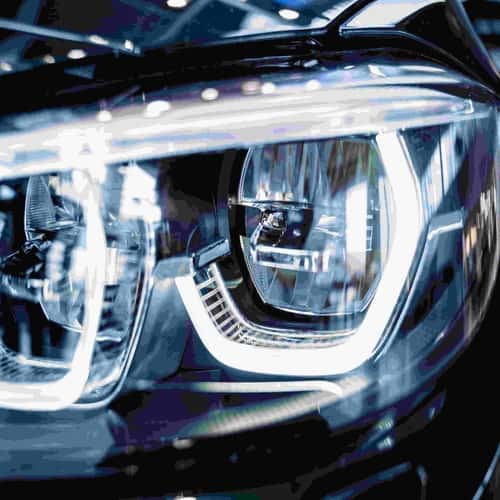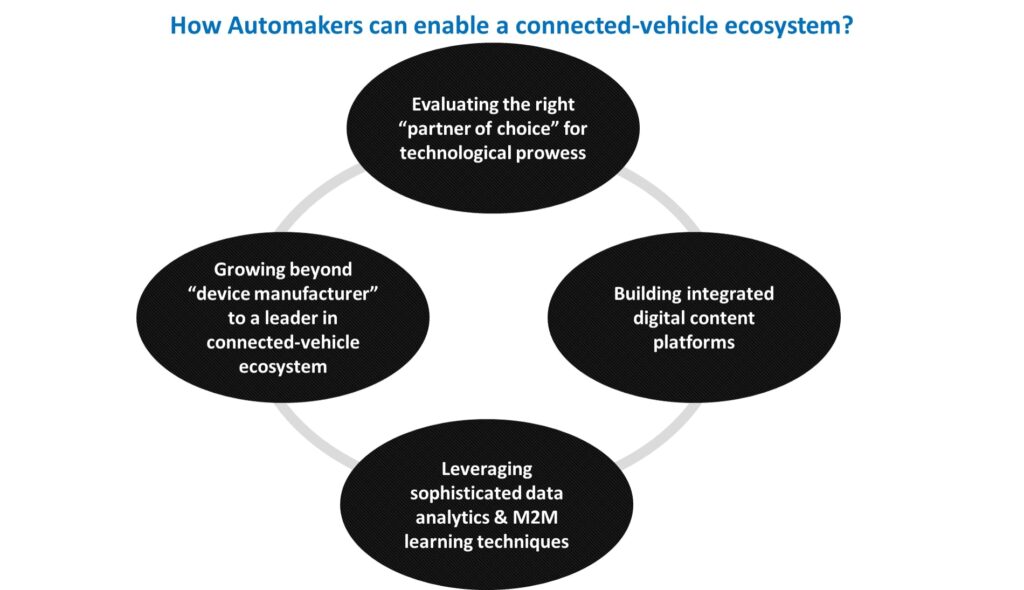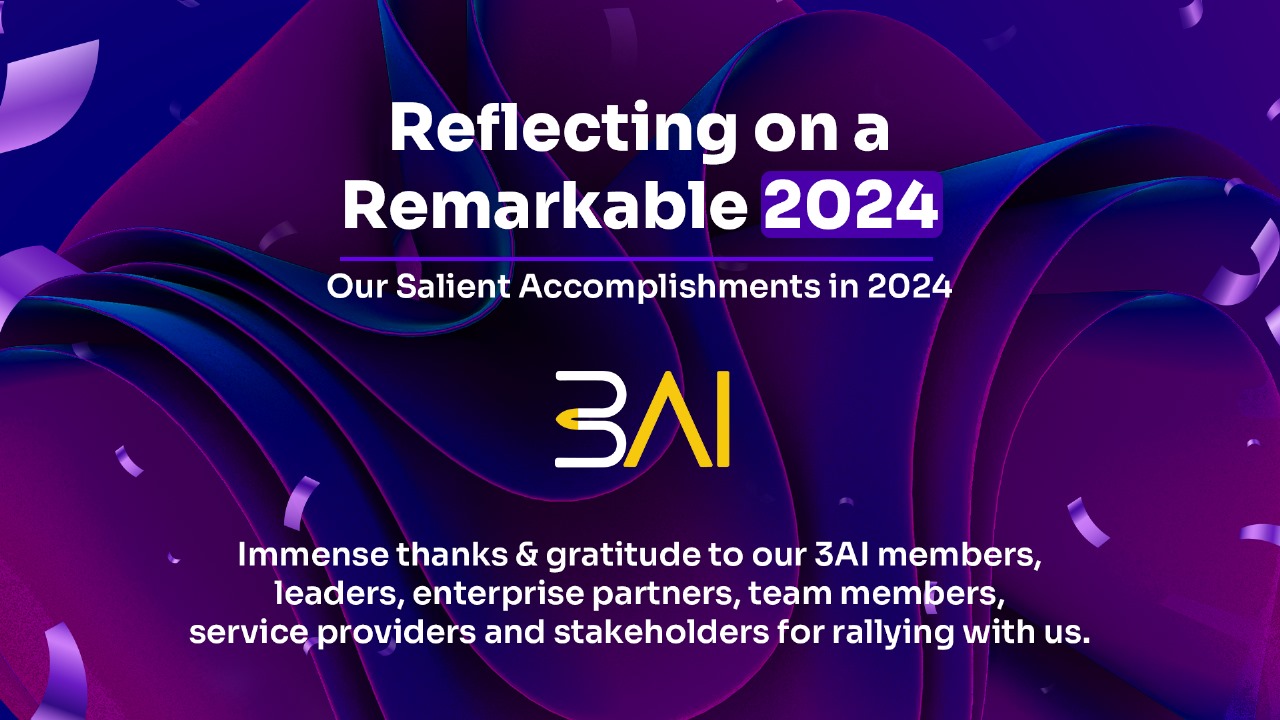Connected Car: The new lease of life for Automobile industry
3AI October 5, 2020

Your connected car vehicle is on its way! As our cars become the part of this “nexus of devices” interlinked to each other via the Internet —new upcoming trends in the world of automotive technology and society will bring in radical shifts in the way we perceive transportation. What’s absolutely certain is that tomorrow’s automobiles will provide experiences that go well beyond plain vanilla driving. How we drive is set for major overhaul as the rise of advanced driver guidance systems, connected cars, and big data analytics, machine learning, make mobility safer, quicker, and greener. However, until recently, this transformational shift of technology was bounded within the murky realms of slideware, rather than actual reality. How useful are vehicle-based wide area traffic networks, and what role can big data play in bringing order to the all too disordered road system was still a mystery to most.
The coming decade or two would see a radical shift in the creativity levels with embedded intelligence inside vehicles. Automobile companies must rise with the tide, make most of these technological shifts for unique, differentiated value proposition, craft new values, products and services, and carve out a new ecosystem of partnerships with technology companies. As cars transform from being basic vehicular means of transportation to becoming intelligent systems, I am sure there’s lot to gain not just for the suppliers, service providers but customers as well. Major auto manufacturers across the globe, including GM, BMW, and Tesla are making significant investments in connected car programs in order to build in differentiation and the partnerships in this space are thriving at a tremendous rate (M2M service providers like AT&T and China Mobile and automotive brands). Some of the other leading automakers are changing rapidly to meet the growing consumer demand for integrated, personalized connected car services. Even if you see the predictions from some of the known Analyst firms, the future of automotive industry shall be driven by:
- Self-driving vehicle offerings shall observe a substantial boost with the proliferation and better access to cloud computing resources, data sources and real-time analytics capabilities
- Self-aware vehicles shall lay down bedrock for improved safety and better utilization of road infrastructure, dynamically manage traffic flow at key locations, optimizing driver’s cognitive load and truly harness the power of self-driving capabilities.
- Automotive industry is observing a radical shift from connected car, to connected driver to connected consumer. It implies a true convergence of industries, opening of doors to newer opportunities & brilliant platform for cross pollination of ideas cutting across numerous adjacent industries for a seamless user experience. With the user being a pedestrian on the road, of the chauffer driving car or the passenger sitting in the back seat of the car.
The automotive and transportation business is stepping into this new era of innovation, at an inflexion point where vehicular behavior could be automated to an extent unimagined till date. In a way very much similar to the evolution of smartphones, over the next decade, automobiles will rapidly become “connected vehicles” that access, consume, and create data and disseminate insights with drivers, passengers, public infrastructure, and devices, sensors including other cars. Disruptive technologies like big data, cloud, analytics, mobile and social are transforming the way automobile industry operates and vehicles being treasure troves of data waiting to be leveraged by smarter businesses to redefine operations. Practically, imagine the scores of chips, transistors, actuators and sensors and what not generating voluminous data. Hundreds & thousands of lines of code are being scanned every microsecond to ensure slick operations for a seamless experience. The massive data deluge generated by these devices/sensors—combined with iTunes services linked to your stereo system, ubiquitous mobile services making sure you are connected to the mobile world, and advanced GPS navigation—creates vehicles that are no more stand-alone IOT entities (Internet of things), allowing drivers to be almost as connected while driving as they are at home. Today’s vehicles have essentially become mobile, data-driven and cloud-enabled computers on wheels. These technologies have improved cars’ reliability and performance while making them safer.
The growth & proliferation of the connected vehicle is closely aligned to what we observed for smartphones, with the 3G/4G internet services, though relatively new & still evolving but reshaping to user expectations when it comes to on-the-go access to data. Recently, consumers have been increasingly viewing vehicles/cars in the context of connectivity, and automakers realize they must offer in-vehicle access to data and enable transactions (even entertainment, shopping et al) in order to stay relevant. For example, vehicle navigation systems are already the location-based service that’s most popular with consumers, with real-time personalized coupons/offers being doled out on a context-aware basis; next-generation navigation systems able to incorporate up-to-date maps and real-time traffic information are bound to be even more appealing. Expectations for accessing other digital content in the vehicle will continue to grow, and by 2016, the majority of consumers in mature automotive markets will view in-vehicle access as a key buying criterion.
We can already predict benefits such as reduced accident rates, improved productivity, lowered emissions, and on-demand entertainment for passengers. The rise of connected cars will lead to widespread changes affecting many kinds of businesses, not to mention governments and communities. As just one example, we are seeing collaborations between automakers and life-science companies to develop in-vehicle health-monitoring sensors that can transmit data about the driver’s health in case of an emergency. Other industries may also be challenged by the evolution of the connected vehicle. Insurance companies, for example, will have no option but to rethink new risk models based on drastically reduced accident rates. Not so astonishingly, governments may put in place personal emission allowances to restrict the use of cars powered by internal combustion engines and monitor for aggressive or reckless driving behavior. In the long term, the connected vehicle will have an impact on urban development as cities use technology to try to solve traffic, parking, and pollution problems. Imagine the limitless possibilities Analytics has to offer right from warranty management, detailed prognosis, vehicle failure modelling, geo-spatial analytics, actuarial analysis for insurance, and advanced CRM services. The improvements in safety alone this will generate will be significant: from collision warnings to blind spot checks to left turn assisting. While this is all great, much of the infrastructure, policy regulation and standardization required to make these things a reality does not exist today. That is one of the big challenges.
Over the next decade or so, rapid growth in sensors, high computing power, advancements in the space of machine learning, complex analytical algorithms and big-data analytics will get us closer to that magical figure of near-zero accidents with vehicles “talking” to each other and real-time traffic management based on density of vehicles on a particular route. Cars that are aware of their own location and the location of other vehicles will “self organize”, communicate & transmit data to one another and to the infrastructure in order to optimize traffic flow, reduce congestion, bring down pollution to unimaginable levers, and increase overall mobility. Imagine a future in where a octogenarian or a differently abled person can commute over long distances in a self-driven car. That may mean more visits to the nearby hospital for periodic treatment, or even going to places without an iota of dependency on others. The autonomous vehicle would also completely take out the possibility of distracted or diffused attention driving and make way for more fuel-efficient e.g. optimizing acceleration depending on the next turn, or traffic light signal or a slowing down car right in front. Self-driving cars may open up the legality doors too: Is 18-years+ the only permitted age to “drive”? Drunk driving, can it be a reality? Who would be legally at fault in case of an accident involving two autonomous vehicles? So practically, how far away are we from a future “Internet of Cars” and what will be the social and privacy impacts of more connected-car scenarios?

For automotive industries, time is ripe to foray in the connected car space, evaluate possible alliances & partnerships not just from a manufacturing standpoint but technological prowess which may alter their business model altogether. Choosing the right technology partner which brings in the requisite expertise on the technology front, understands the core operating fabric of automotive industry & is willing enough to play with these futuristic technologies may deem fit for this automotive transformation journey. Automotive players have to broaden their knowledge horizon, break the shackles of conventional rules & be gung-ho about exploring beyond current business boundaries to build their own proprietary platform for all commerce transactions (tapping into existing sensors, software and wireless data capabilities) happening inside the vehicle. Automotive businesses should evaluate the possibility of unveiling their own digital content platforms, or even consider other revenue models with consumer electronics organizations or internet businesses intending to invest heavily in this area going forward. Leverage sophisticated algorithms & data analytics capabilities can uncover both vehicular and customer-related insights from the data deluge and can be used by 3rd parties like govt (traffic flows, road infrastructure), Police departments (Safety), Insurance companies (Risk scoring for premiums) etc. Choice remains with the automotive businesses whether to be just a “device manufacturer” or evolve into a leader in the connected-car ecosystem. The transformation is inevitable or the business is at risk of being outperformed by competitors and be another “Kodak story” in the automotive world. Connected car may be a reality sooner enough than we all think! Are we game for this new driving phenomenon?
Title picture is from freepik.com






